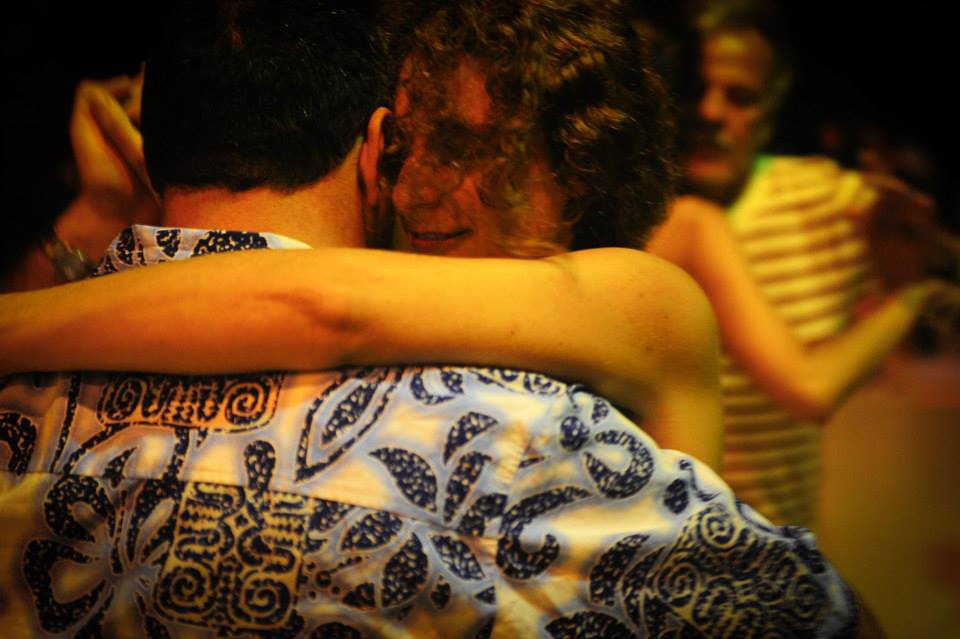Dancing has always been a popular form of exercise, but it is now medically proven that dancing, and especially the Argentinean tango, has great medical benefits. “Tango therapy” is the term applied to the therapeutic purposes of this dance, and it is rapidly becoming a popular way to increase the quality of life of many patients. Dancing not only cures the body, it also stimulates the mind and is used to help people who suffer with everything from Parkinson’s disease to depression and a list of phobias. Thirty eight years old Giulia Zimei, from Rome, is one of the passionate tango teachers who use Argentinean tango as a form of physical and mental activity to facilitate movement and get therapeutic benefits.
When did you start dancing yourself? How did you discover and cultivate your love for Argentinean tango? Please elaborate.
I started when I was 23 years old, pushed by my father, who was passionate about tango. Soon I became a teaching assistant in the same school in Rome where I had previously been a student. I considered going to Buenos Aires in Argentina to improve as a dancer and as a teacher.

Photo by Leone Perugino
Besides giving classical tango classes, you have been working with individuals living with Parkinson’s disease, who can experience a range of movement disorders that affect mobility and balance and increase the risk of falls. How did you start giving therapeutic tango classes, and what have your professional and personal experiences been with working with PD patients? Please elaborate.
A former student of mine contacted me and introduced me to Laura Guardia, who practices acupuncture in a holistic center in Rome. Laura, together with a colleague of hers who is a neurologist in a hospital in Rome, was looking for a tango teacher to do a study about the impact of the Argentinean tango on patients who have Parkinson’s disease. I began teaching patients to dance the tango while experts analyzed their behavior before and after. Many studies had already been done about the benefits of tango dancing on Parkinson’s patients.
I found this experience to be very enriching for me from the human point of view, but not very different from teaching people who didn’t have problems of this kind. I always try during my lessons to adapt to the level of learning of every individual, respecting the specific skills of each person.
What was the most difficult part of your job as a teacher at that time?
The biggest fear that I had before I started with this experience is that I was not competent enough. But I soon understood that the constant presence of other professionals like social operators, neurologists, or social assistants was making my job simpler and more reassuring.

Photo by Michele Maccarrone
Nowadays, tango therapy treats a range of other mental and physical health complications, and I gather you will soon start teaching tango to children with mental disorders. How do you plan to approach them, and what do you expect to achieve?
With respect to patients who suffer from mental disorders, I will for sure try to take the relational part of this dance to a higher level. During lessons with patients with Parkinson’s disease, I focus on technique and on introducing proprioceptive (ability to sense stimuli arising within the body regarding position, motion, and equilibrium) exercises, to improve balance and coordination. With persons with psychological disorders I will emphasize the exercise of social interaction and of tango in its more relational aspects.
What do you think is the most important thing about tango that helps people? Is it the closeness with the dancing partner that gives the sense of safety, or is it something else?
I think that while dancing tango there is a strong component of mental stillness and that it is more than just a physical exercise, as is the case with other disciplines such as yoga. This meditative part of tango helps to clear the mind. Because it’s a dance for couples, it allows us, and sometimes even forces us, to get closer to others, to approach other people. It’s very often simply that we are dancing with a complete stranger at such a small distance. It is important to understand our limits and the limits of our partners, and to accept them. These are for me some, and only some, of the important features of tango as a therapy.
Support us!
All your donations will be used to pay the magazine’s journalists and to support the ongoing costs of maintaining the site.
Share this post
Interested in co-operating with us?
We are open to co-operation from writers and businesses alike. You can reach us on our email at [email protected]/[email protected] and we will get back to you as quick as we can.









